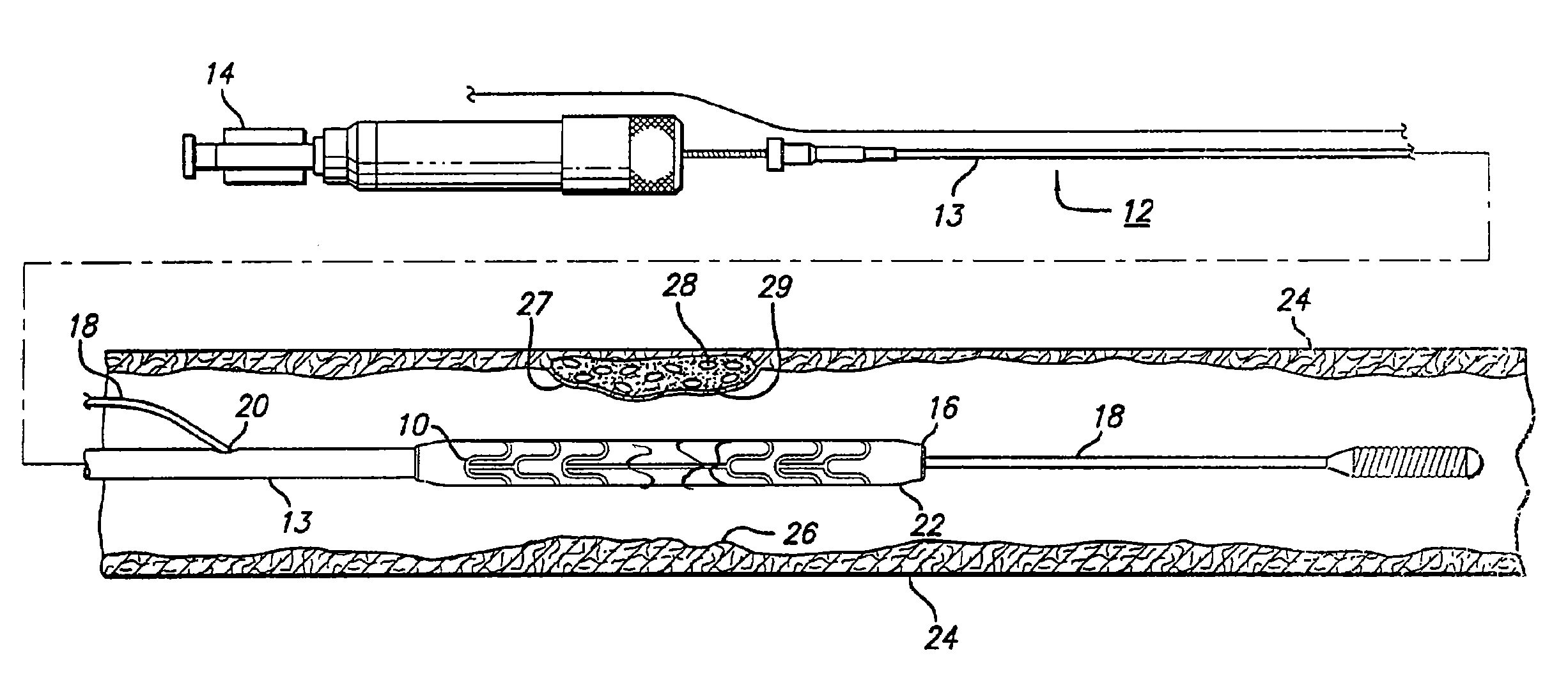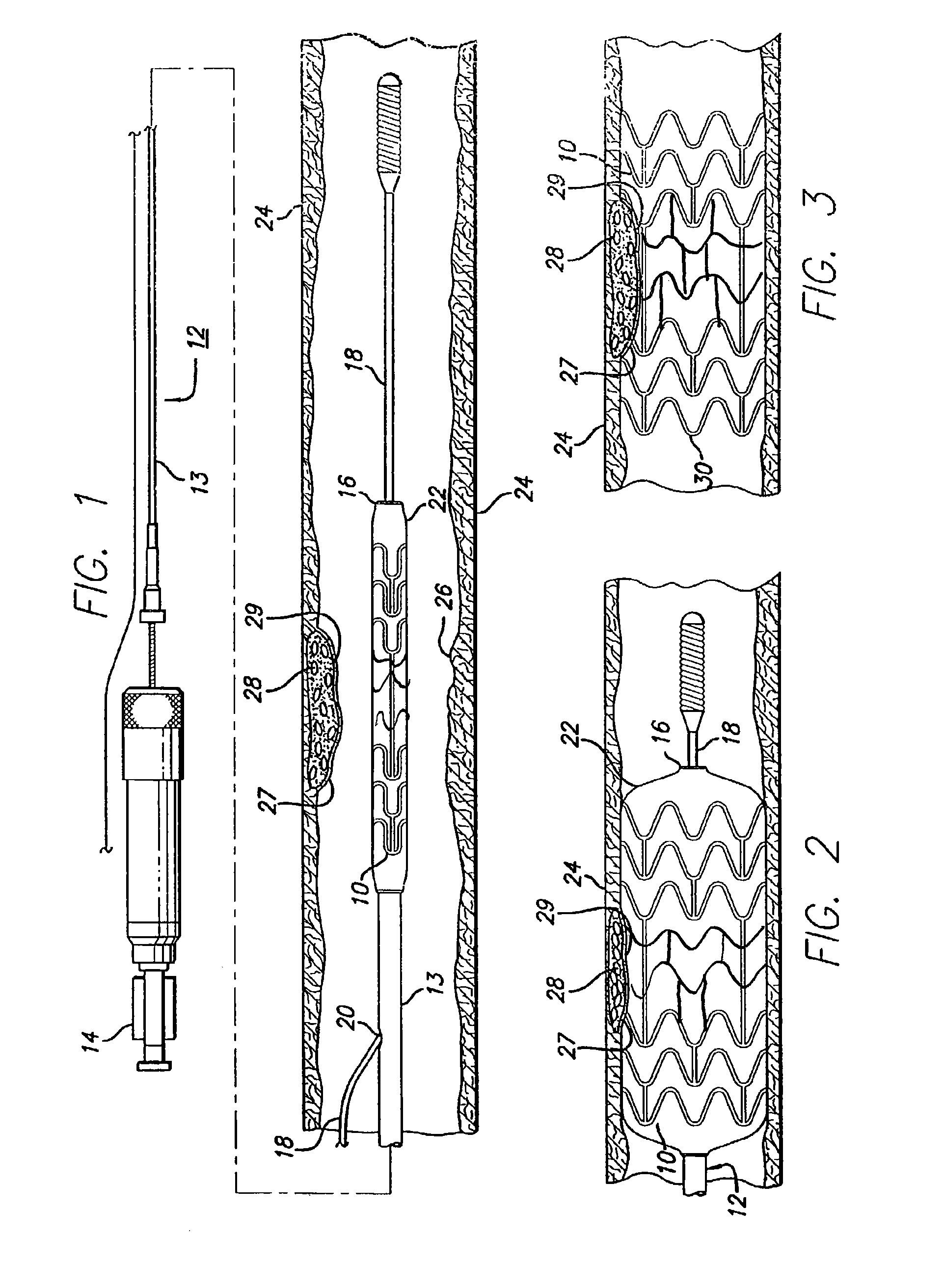Medical device of ternary alloy of molybdenum and rhenium
a technology which is applied in the field of medical devices of ternary alloy of molybdenum and rhenium, can solve the problems of large elastic moduli, difficult processing into those same medical devices, and limited physical performance characteristics of materials, etc., to achieve adequate radiopacity, improve ductility, and improve the effect of useful characteristics
- Summary
- Abstract
- Description
- Claims
- Application Information
AI Technical Summary
Benefits of technology
Problems solved by technology
Method used
Image
Examples
Embodiment Construction
[0012]The use of stents in medical procedures is well known in the art. U.S. Pat. No. 7,331,987 discusses the use of stents in such procedures, and the contents of the '987 patent is fully incorporated herein by reference. The present invention when employed as a stent improves on existing stents by providing a unique ternary alloy material that improves the physical properties of the stent.
[0013]FIG. 1 depicts a stent 10 comprised of the ternary alloy of the present invention mounted on a catheter assembly 12 which is used to deliver the stent and implant it in a body lumen, such as a coronary artery, peripheral artery, or other vessel or lumen within the body. The catheter assembly includes a catheter shaft 13 which has a proximal end 14 and a distal end 16. The catheter assembly is configured to advance through the patient's vascular system by advancing over a guide wire by any of the well known methods of an over the wire system (not shown) or a well known rapid exchange cathete...
PUM
| Property | Measurement | Unit |
|---|---|---|
| ductility | aaaaa | aaaaa |
| refractory | aaaaa | aaaaa |
| crystal structure | aaaaa | aaaaa |
Abstract
Description
Claims
Application Information
 Login to View More
Login to View More - R&D
- Intellectual Property
- Life Sciences
- Materials
- Tech Scout
- Unparalleled Data Quality
- Higher Quality Content
- 60% Fewer Hallucinations
Browse by: Latest US Patents, China's latest patents, Technical Efficacy Thesaurus, Application Domain, Technology Topic, Popular Technical Reports.
© 2025 PatSnap. All rights reserved.Legal|Privacy policy|Modern Slavery Act Transparency Statement|Sitemap|About US| Contact US: help@patsnap.com


